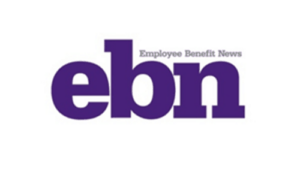
By now, we’re all aware of the importance of mental health benefits—and for good reason. According to the World Health Organization (WHO), every $1 invested in mental healthcare for employees has a $4 return in regained productivity and reduced future health costs. And thanks to regulatory changes and years of improved awareness, mental healthcare coverage is more accessible than ever. In fact, as of 2014, even small employers and individual health plans are required to include coverage. However, that doesn’t mean everyone in your workforce is covered, or that your colleagues are getting the most of your investment.
Here are three tips for taking mental health and well-being benefits to the next level:
1. Expand Access
Expanding access to services and adding service coverage are key to helping your employees take control of their mental health and well-being.
As a result of the COVID-19 outbreak, many providers have been moving to telehealth and virtual appointments. But some employees may still be reluctant to try telehealth. Now is a great time to educate employees on such services covered by your plan.
Additionally, you might consider some options to expand the number of employees covered.
Especially in large, retail or service-based companies, it’s common to have a portion of your team working part-time. In many cases, these part- time employees may not qualify for the company health plan. For these employees, an employee assistance program (EAP) can bridge the gap and make care more accessible.
An EAP is a voluntary program that offers crisis support services to participating employees. With an EAP, employees and their families can request assessments, referrals and counseling. As a voluntary benefit, it can be offered to part-time employees, those who are covered by a family member’s health plan and even an employee’s family. Just as with alerting employees about telehealth, it’s also vital to communicate the addition, or existence, of an EAP to employees and members.
2. Create Incentives
According to a recent survey, more than 1 in 4 Americans have declined medical treatment because they didn’t know if it was covered by their health insurance plan, and more than half incorrectly believe that mental healthcare isn’t covered at all.
A great way to educate your employees to better utilize their benefits is through a wellness program that includes incentive-based challenges. These programs not only bring about awareness of certain covered plan components such as preventive care and wellness visits, but also introduce programs that they be unfamiliar with by making them part of the challenge.
A recent client activated an online wellness program that awarded points for completing a series of tasks. These tasks were tracked electronically through a wellness website or portal. As part of the reward for earning a certain level of points, participants were offered a trial subscription to a healthy meal kit service and a top-rated online counseling provider.
3. Streamline Your Offering
For many employers, a tailored benefits plan is a patchwork of several vendors that best fit your workforce. This can create confusion and complexity, especially if you select an outside EAP vendor whose mental health coverages may overlap or intersect with your health plan.
Speak with your benefits consultant about ways to streamline your offering. That could include a benefits smartphone app where you can access all of your plan components, or a one-on-one concierge service acting as a central hub to help employees better utilize their benefits.
Your consultant should also have a wide variety of educational materials and campaigns available for distribution to your workforce, along with channel- of-choice communication techniques to enhance utilization of these materials. Take the client we spoke about before: during their wellness challenge, each member of the HR team included a link to the well-being app in their internal email signatures. That provided a constant reminder about their wellness challenge and yet another access point.
Fortunately, there’s a silver lining to this year’s unprecedented demand for mental healthcare: increased awareness and acceptance of mental health issues, even in the workplace. But, there’s more we can do.
Know when to ask questions. Are your employees taking advantage of this service? Do they have appropriate time off to get to their appointments? Do they feel confident there will not be repercussions for using these services? Until health plans are required to cover mental health, it’s important to take an active role in promoting the use of mental health services. Your employees, your company culture and your bottom line will thank you.
Sources
1World Health Organization, “Investing in treatment for depression and anxiety leads to fourfold return”
2Policygenius, “Health Insurance Literacy Survey 2020”





